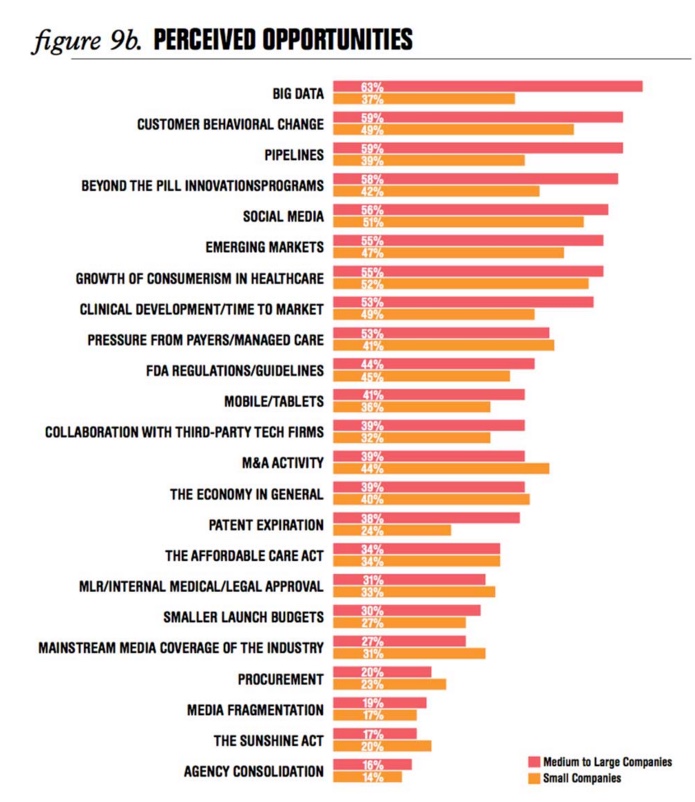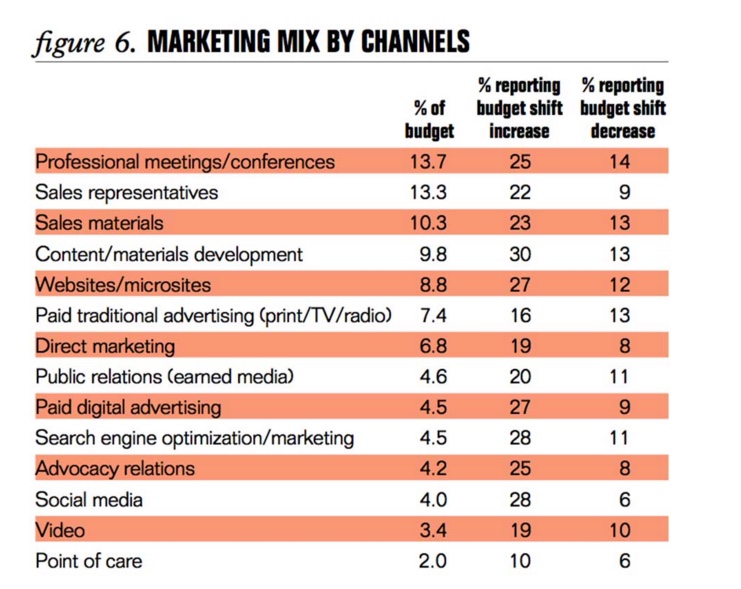Healthcare organizations continue the march toward digital programming. Yet, the one place that they often fall short in is the one place they need to be on top of: understanding digital.
MM&M’s Healthcare Marketing Trends (3rd edition) reports a surge in digital spending among pharma, biotech, device and diagnostics companies. What we noticed is a lack of focus on the right type of content.
Take note! Health consumers are not seeking out brands but information, which means that unbranded content can go a long way in terms of delivering on customer expectations and an overall customer experience. But the stats speak differently, with digital spends leaning toward branded (56%) versus unbranded (31%) content. According to the report, the rationale is “because they can.” Not only does this attitude demonstrate a complete lack of appreciation for the significance of customer-centric messaging, but it also highlights one of the largest elephant in the healthcare marketers’ rooms: the ability (or lack, thereof) to truly understand digital.
Understanding digital: less of a ‘thing,’ more a way of ‘doing’
McKinsey and Co posted an article last year that challenged companies in all sectors to step back and consider what digital really means. One of the more critical points is something that is highly important to healthcare organizations: “digital should be viewed as “less of a thing and more a way of doing things.” The authors challenged businesses to define where new value pools resided. The key? Customers! Mind you, healthcare marketers by and large do understand that their biggest opportunities lie in leveraging big data and focusing on customer behavioral change. Even social media makes it into the top four priority opportunities, although the growth of the consumer in healthcare, while in the top 10, appears further down the list:

Multichannel marketing being skipped over
The very same companies that noted areas of major opportunities, i.e. in the data that they have been gathering and in behaviorial changes are still not putting their dollars into multichannel marketing. Rather, at least a quarter of budgets have been shifted to professional meetings, sales reps and sales materials. And while some of the shift has been toward content development, the emphasis is clearly misdirected; just look at where social, video and point of care fall on the spectrum. Talk about mixed-up priorities!

Understanding digital – a new mindset, new priorities, new lens
Look, we get it. Digital or die, right? However, until healthcare organizations lose the rhetoric about delivering for their customers and actually start valuing both the processes and foundation that support an interconnected, evolving relationship, their quest to create value will ultimately fail. Simply shifting dollars is not even nearly close to what digital means. Moreover, the hardest shifts must occur at the organizational level before communications initiatives are started. As McKinsey Author Karek Dorner writes, “digital is about unlocking growth now.” What this means to an individual company may vary, but ultimately it comes down to:
- being open to doing business in new ways. This is a hard sell for traditional companies accustomed to doing things the traditional way. To succeed in digital, hierarchies must be flattened and decision-making more cross-departmental, particularly when it comes to content.
- being in tune with your customers needs, behaviors and expectations, aka, their journey with your product, your company and your brand(s)
- losing the one-of mindset, one that resonates of product-centric communications; content and the processes that support its development must evolve based on your customers and their journeys
- pay more attention to how IT is running the show; cross-functional IT is the new black when it comes to digital
Open, in-tune, new lens. These three concepts are bucking the trend in healthcare. Without them, healthcare marketers are stuck in quicksand. Digital waits for no one. It is not a cliche. But it is a path that is filled with major challenges. It is time for healthcare to get their arms around the space.

